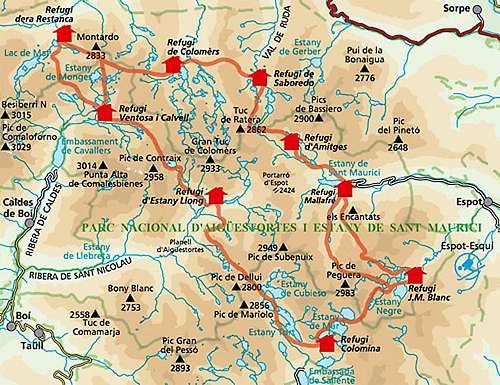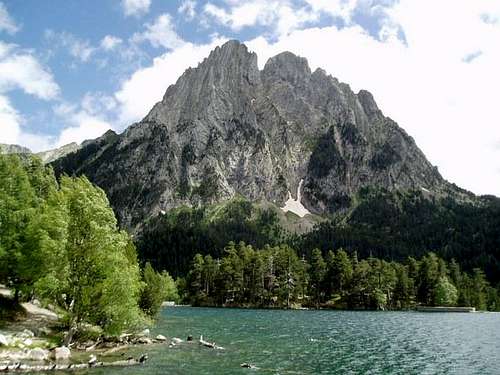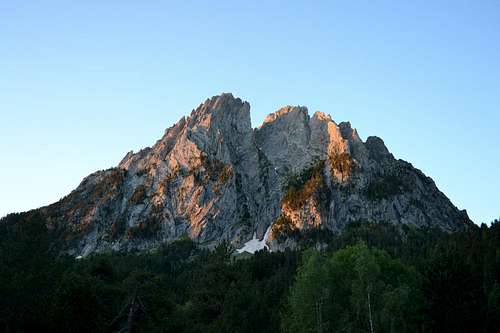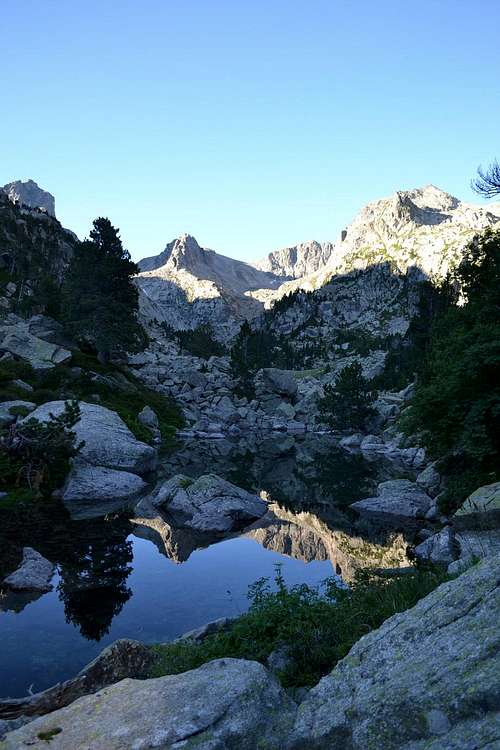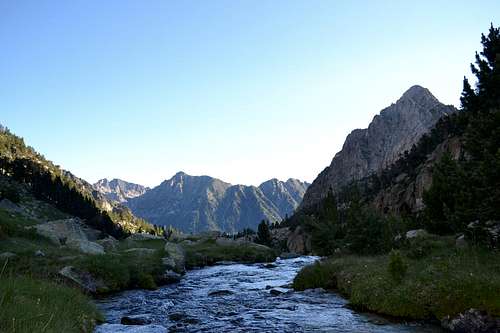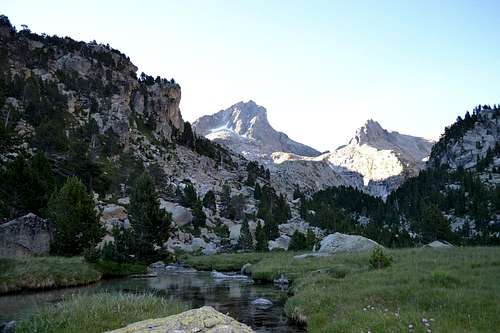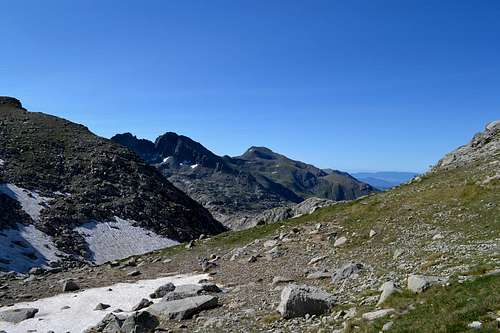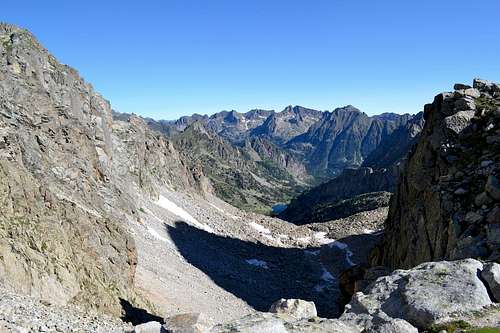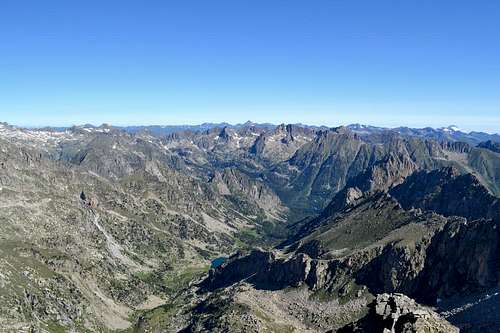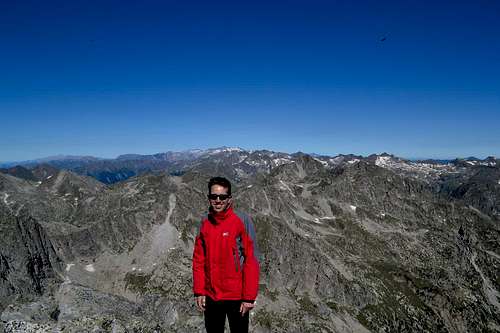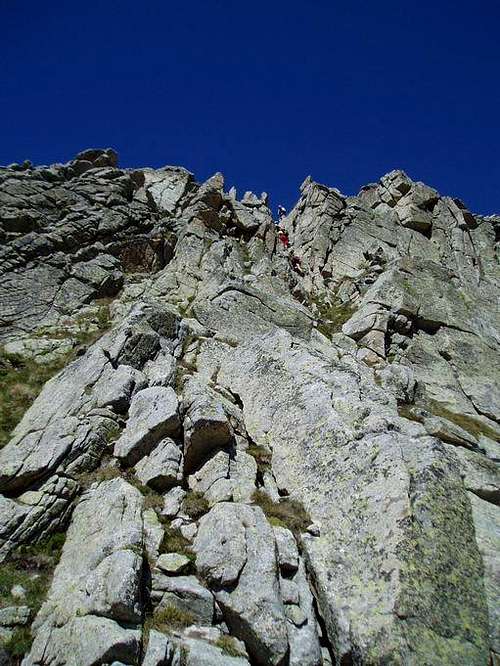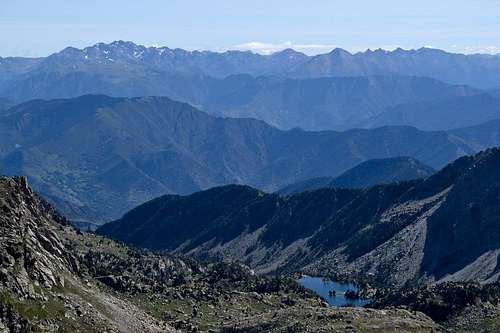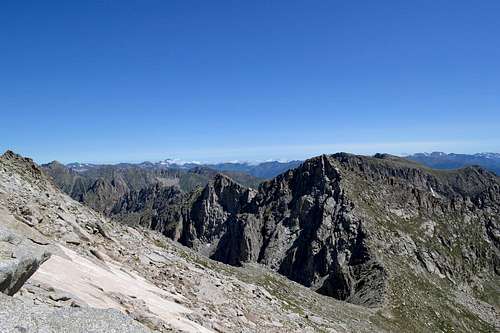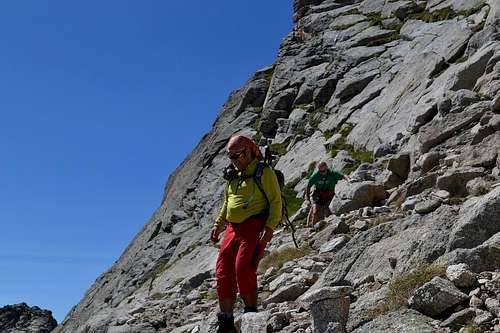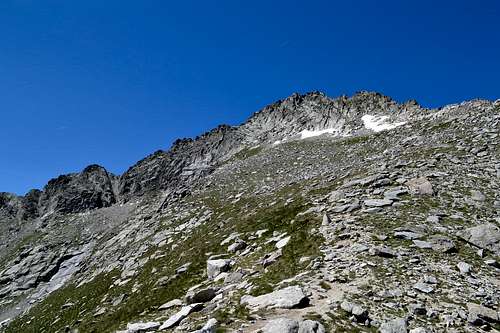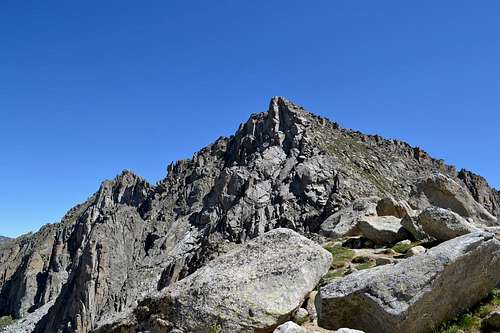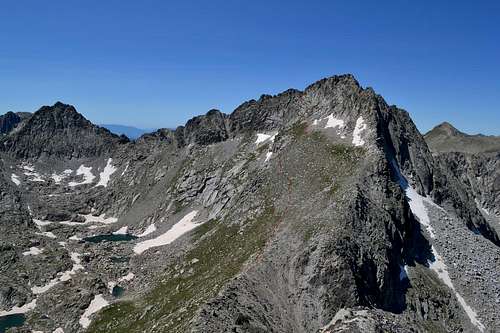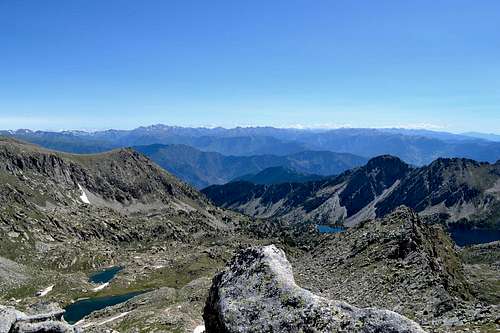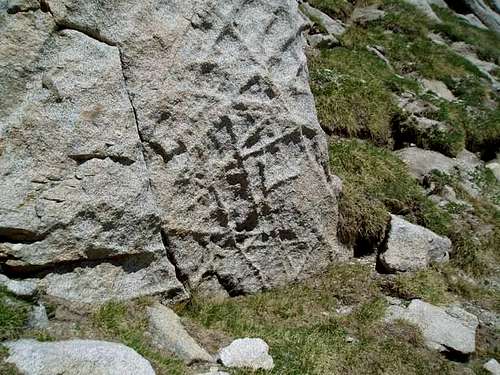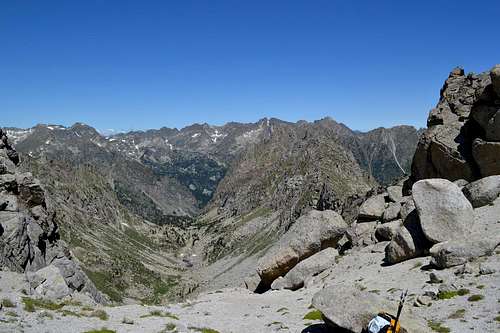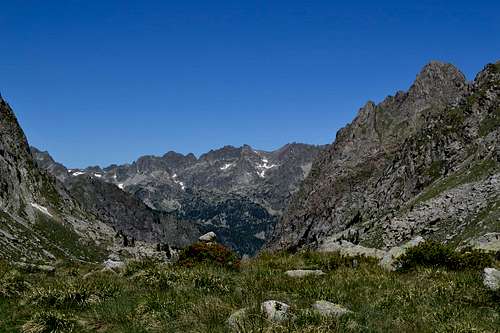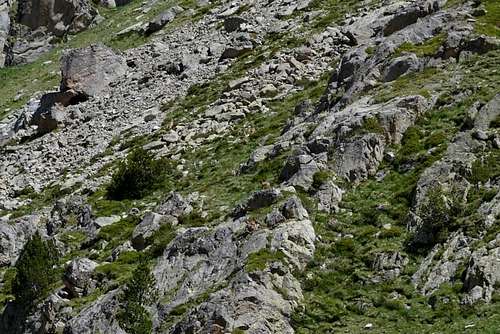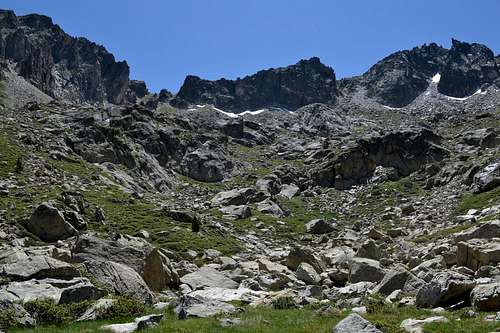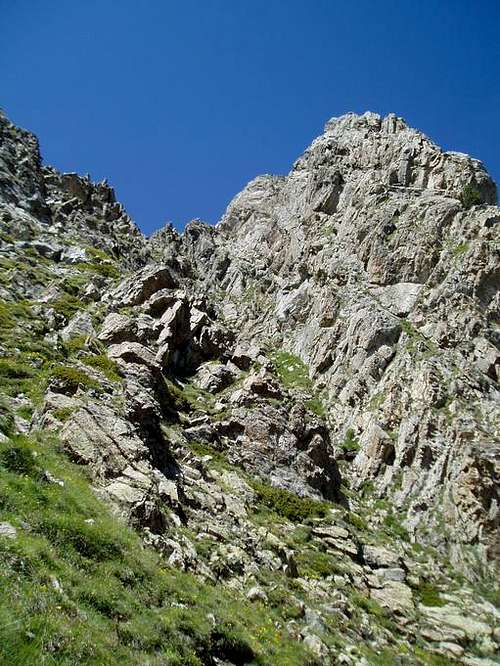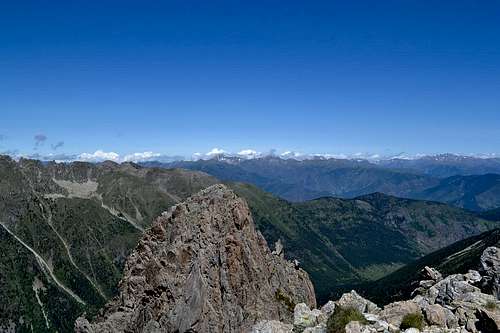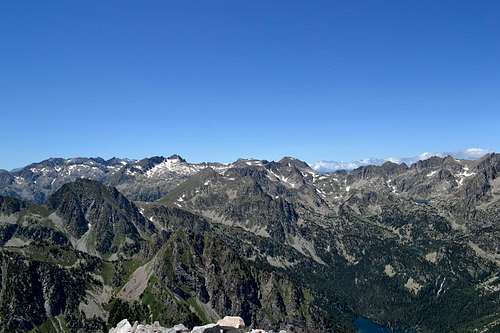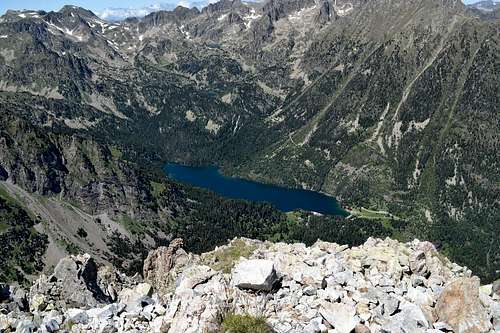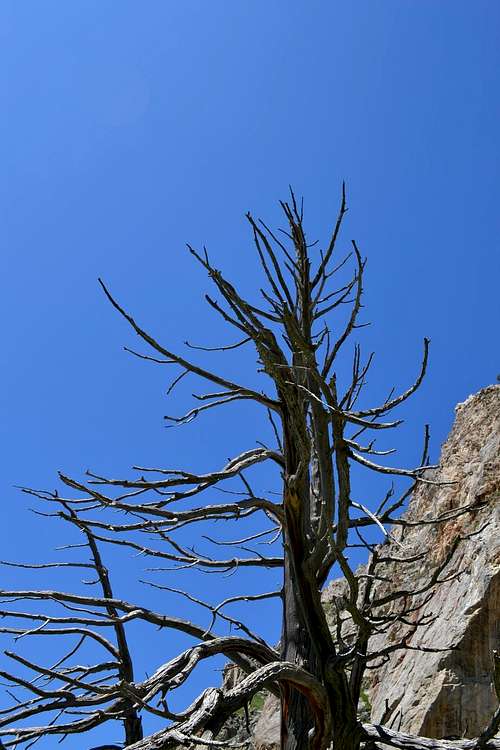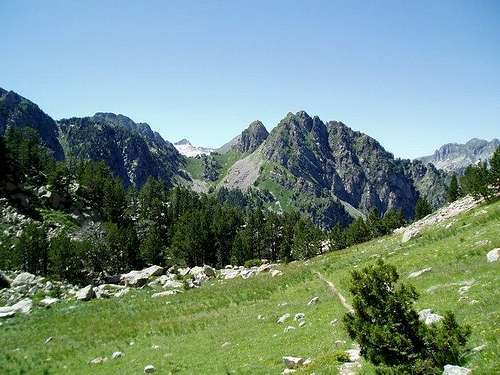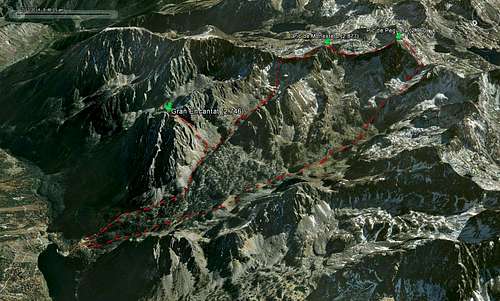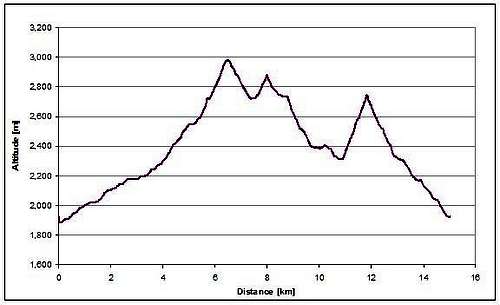|
|
Trip Report |
|---|---|
|
|
42.54672°N / 1.01884°E |
|
|
Download GPX » View Route on Map |
|
|
Jul 22, 2014 |
|
|
Hiking, Scrambling |
|
|
Summer |
Intro
After having spent the last couple of summers in the Alps I decided it was finally time to try something else and since I had never gone to the Pyrenees, the choice wasn't that hard. After having surfed a bunch a SP-pages and having mailed with the highly productive SP members Rafa Bartolome and Eric Visentin I came up a with a schedule covering 3 weeks that included both a number of the highest peaks and crossed some of most beautiful areas. The schedule included two days in the Aigüstortes - Sant Maurici National Park, an area that is recommended in all guide books and that Rafa and Visentin mentioned as well. It turned out that their recommendations were well founded, because the area is excellent for both hiking and scrambling to summits. This trip report is about my second day in the park - and trip that would take me to the summit of three major peaks in the eastern part of the national park.Day 1 - rest day
Day 1 was scheduled as a rest day after having climbed Pica d'Estats (highest peak in Catalonia) the day before, and besides the weather was grey with a light drizzly in the morning. I was lazy and took a taxi jeep (5 euro) the 5 or so km's from the town of Espot up to the Sant Maurici reservoir and hiked 15 minutes to Refugi Ernest Mallefré, one of the smaller refugios on the highly popular Carros de Foc circle trail.Day 2 - a long day ahead
The plan for day two had originally called from climbs of Pic. Perguera and Pic. Monestero, a trip mentioned as a full day outing in a hiking guide I had read. After having added Els Encantats it looked like it would be one of those marathon days, that I really enjoy (living in Copenhagen you really have to make the most of the days in the mountains, since Denmark overslept the day they were handing out mountains ...). Adding Els Encantats to the list also had the benefit that it would form a looped route and not just a trip out and back the same way.
GPS track of the route. Pirineos 6.1 background map. A: Ref. Mallafré (1.893 m), B: Val. de Monestero, C: Coll de Peguera (2.718 m), D: Pic de Peguera (2.960 m), E: Coll de Monestero (2.715 m), F: Pic de Monestero (2.715 m), Coll de la Valleta Seca (2.722 m), Valleta Seca, I: Coll dels Encantats (2.582 m), J: Gran Encantats (2.748 m)
Stage 1: Ref. Mallafré (A) - Pic. de Perguera (C)
Stage 2: Pic de Perguera (C) - Pic de Monestero (F)
Stage 3: Pic de Monestero (F) - Els Encantats (J)
Stage 4: Els Encantats (J) - Ref. Mallafré (A)Stage 1: Ref. Mallafré - Pic. de Perguera
I knew, I had long day ahead of me, so got up at 6:40 to be ready for breakfast. Weather called for clear blue sky - excellent. Gulped the rather sparse breakfast (my ancient Viking genes cried for more food than the latino breakfast of dry bread, biscuits and a cup of coffee...) and was quickly on my way with alpenglow on Els Encantats and a deer with a fawn grassing. Pure idyll.One of the funniest moments of the day happened when I met a couple (Girlfriend and Boyfriend) that hiked in the opposite direction. They had camped further up the valley (I am not sure if that is allowed, but the chances of meeting a park official are close to none so...). They were a bit lost and asked me, where they were and if it was Pic de Peguera, we could see on the eastern side of the trail. I told them "ehh, no, Pic de Peguera is 2 km's back they way you came". Boyfriend didn't look convinced, so I found my GPS and showed him that we were standing in the middle of the Monestero valley. Boyfriend found it difficult to argue with technology, even though he still looked skeptical. It turned out that they had somehow missed hiking over the 100+ m high pass of Coll de Monestero in the fog the day before. As I left them, I could hear Girlfriend being quite sarcastic about the navigational skills of Boyfriend :)
Stage 2: Pic de Perguera - Pic de Monestero
According to my map the route to the next pass, Coll de Monestero, should follow the northwest ridge. "Marc" however had been told by the wards of the nearby refugio, that it was prone to rock fall and that the east face route was better. "Marc" had climbed this way up and told me that it was fine. We retraced our route along the ridge, passed a group of Basque people, and then descended 20-25 m down a steep chimney.This was the hardest part of the climb on Peguera. I used hands and feet on a few moves and didn't find it too difficult while "Marc" assisted the Basques with a rope that he had brought along.
Stage 3: Pic de Monestero - Els Encantats
I descended Pic de Monestero on the northern side and headed towards the next pass, Coll de la Valleta Seca. It was more "off road" now, since there was hardly any trail left. Still the terrain was quite easy with a mixture of grass and a few rocks.As I got down to approx. 2.300 m I reached a trail intersection. I could either head directly down to the refugio (my legs voted for that) or since it was only 2 pm and weather was still fine, I could take the path to the right and climb Gran Encantats (my head voted for that) - so Gran Encantats it was. I stashed some stuff I didn't need to save weight and headed uphill.
Shortly after the intersection I met two Germans. They had been heading for the summit but had turned back in the ravine leading towards Coll dels Encantats due to risk if rock fall. They had however seen another climber continuing to the summit, so I decided to have a look at it.
The first 300 meters of climbing went up through a small ravine to Coll dels Encantats. The surface was a mixture of loose gravel and loose rocks and a few sections with more stable rock formation. Mostly however it was just two steps up and one step down. Crappy terrain. From the coll the terrain got even steeper, but on the good side the loose stuff was replaced by more competent limestone. Most of the way it was simple scrambling with hands only used for a little support. On 3-4 sections however it was much steeper and more like low grade climbing. It wasn't technically that difficult and the rocks were good, but the consequences of a fall would have been fatal - what a cross and memorial plate shortly before the summit clearly shoved. I got to the summit 45 minutes after leaving the intersection with a high pulse due to a mixture of a speedy accent and
adrenaline of the climb
Stage 4: Els Encantats - Ref. Mallafré
I drank the last of the water I had brought along, gathered a little strength and then started the climb down. My concentration was really high on the first climbing sections, but from the coll down it got easier - although the terrain was almost as crappy going down as coming up, since 80% of the rocks you touched started sliding down the ravine.
I got the to intersection, picked up my stashed stuff and headed back towards the refugio. There was a good hiking trail on this last section, and my legs were happy for finally seeing some easy terrain.I got back to the refugio around 4 pm after just short of 9 hours of hiking/scrambling/climbing. According to the GPS I had climbed 2.000 m in just 15 km. No wonder my legs were getting tired. Average speed was a poor 2.7 km/h which tells a little about this trip being not just another day at the office.
I celebrated the climb and a perfect day in the mountains with a beer and then just spent the rest of the afternoon relaxing on the porch of the refugio. Later in my 3 weeks trip I would come back to the national park to climb Gran Tuc de Colomers and Pic de Comalforno - and the national park is also on the list of places I'd really like to revised in the future, since for me it has the optimal difficulty for scrambling.

